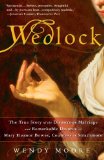Reading Guide Questions

Please be aware that this discussion guide will contain spoilers!
Questions for Discussion
- Mary Eleanor Bowes was brought up by her father to be a self-confident,
ambitious, and clever girl. Thanks to him she enjoyed an education only
normally provided for the sons of aristocratic families and through his
wealth she enjoyed a pampered, privileged youth. Was this upbringing and
education her downfall? Did it make her a poor judge of character, naively
assuming that those who pandered to her needs had genuine affection for her?
Or was it her final strength, which gave her the self-belief to escape and
fight back against her bullying second husband?
- Mary Eleanor married her first husband, the ninth earl, with romantic
expectations of a loving, harmonious marriage. She was just 16 when she
became engaged and had led a largely closeted life. Steeped in romantic
fiction, she was captivated, she said, by his "beauty" and a "vision" in
which he appeared to her (page 42). He was older, sexually experienced, and
worldly wise, having enjoyed a tempestuous affair with an Italian contessa
(page 73). Was their marriage doomed from the start? Whose fault was it that
the marriage failed and Mary ultimately sought affection in an affair? Did
you feel any sympathy toward the earl? What role did the earl's brother,
Thomas Lyon, play in the relationship and was the two brothers' closeness
perhaps a factor in the failure of Mary and the earl's marriage?
- Mary Eleanor herself confessed she was not fond of her three sons
although later in life she tried to patch up her relationship with them. Was
her initial distance from them an inevitable result of customs in
eighteenth-century wealthy families? The children were wet-nursed, looked
after by nursemaids and governesses, then sent away to boarding school. Was
it perhaps a flaw in Mary's personality or a result of her own pampered
upbringing?
- Andrew Robinson Stoney, later Bowes, was undoubtedly one of history's
worst husbands and biggest scoundrels—a liar, a cheat, a womanizer, a bully,
and a fraud. He seemingly had a relatively normal upbringing for the period
in a generally happy family with fairly liberal parents. His own father
called him "the most wretched man I ever knew" (page 239), yet the poignant
letters from Anne Massingberd (pages 109 and 142) reveal his obvious
attraction to women. What could possibly have caused his extraordinary
personality traits? How would someone like him operate today? Would he
perhaps have been diagnosed with a psychotic personality disorder? And why
was he so successful in seducing women? Are men like him still attractive to
women today?
- Mary Eleanor Bowes was vilified during the divorce cases as an
outrageous libertine, an ungrateful wife and a hard-hearted mother. In
biographies since her death she has been portrayed as a silly, vain, and
naive female who, to a greater or less extent, received her just desserts in
her miserable second marriage. Is there any justification in these
descriptions or are these just male interpretations of a woman who sought a
liberated lifestyle? Did she bring her misfortunes on herself? How would a
woman today who followed a similar lifestyle be treated?
- Mary Eleanor endured eight years of almost unspeakable abuse and torment
at the hands of her second husband. Why did she not confide in anyone for
most of this time? Why did she wait so long before leaving him? Was this
mainly a result of her reluctance to leave her children, her fear of
society's condemnation and the financial deprivations she knew she would
incur, or was there any element of hoping her husband would change? When
writing her Confessions she seemed hopeful she could convince him of her
devotion while mindful of her duty to obey him (page 151). Was she still
partly in love with him or was she terrified he would come after her? Why do
some women today continue to live with abusive husbands?
- Most marriages in the first half of the eighteenth century among wealthy
and landed families were arranged by parents as advantageous financial
matches. Some were forced on young people. Gradually during the century
views changed so that the idea of marrying for love and the ideal of a
harmonious companionate marriage—our modern western idea—became the norm.
Some commentators blamed this change on the rise of the novel pedaling
romantic ideas of love and the promotion of self-expression. Can novels have
such a profound impact on society? Did the ideal of a blissfully happy
marriage—the novel's perfect ending—set up unrealistic expectations in
couples? Was this the reason for rising divorce rates from the eighteenth
century onwards and is that necessarily a bad thing?
- During the eighteenth century, reading and writing books and other forms
of literature became an important vehicle for enabling women to express
their views. Women met in literary salons like the famous blue-stocking
club—prototypes for today's reading groups—and some women enjoyed success in
writing poetry and especially novels. So how do books play a role—then and
now—in empowering women? Can literary gatherings or reading groups help in
emancipating—or subverting—women?
© Crown Publishing Group, 2009
Unless otherwise stated, this discussion guide is reprinted with the permission of Three Rivers.
Any page references refer to a USA edition of the book, usually the trade paperback version, and may vary in other editions.

 Book Reviewed by:
Book Reviewed by:



